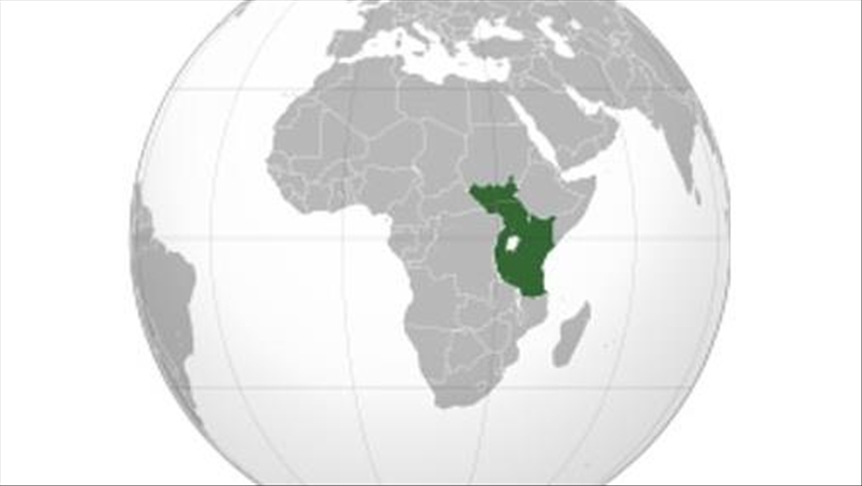Scheme for East African federation fails to take off
Leaders in East African Community claim they support federation

KAMPALA, Uganda
Although the plan of creating an East African federation is not new, countries in the region have not been doing enough to make it possible.
The idea, which originated in the 1960s, involved the creation of a political union of African states.
Uganda, Kenya and Tanzania attained their independence during this period and later formed the East African Community in 2000.
“The three countries in the community resolved to come up with a federation, but it did not go far after a coup took place in Uganda in 1971. Later on in 1977, the East African Community crumbled after Ugandan President Idi Amin’s dictatorial tendencies could no longer be tolerated by leaders of the member states,” said Apollo Oketa, a 75-year-old veteran politician.
A renewed effort towards establishing the federation began with the revival of the East African Community in 1999. Since then, the number of member states has increased to six with Rwanda, Burundi and South Sudan joining the bloc.
All of the leaders agreed on the essential concept of a political union as a federated sovereign state, or “superstate,” united under a single president.
During a meeting in Kenya’s capital Nairobi, the leaders of the member countries observed that the benefits of forming such a state would be numerous, including giving landlocked nations like Uganda, Rwanda, Burundi, and South Sudan access to the sea.
Their original aim was for a complete political union to be attained by 2015. But this did not happen because most of what they had agreed on – especially on issues to do with security, customs, trade, and currency – had not been fulfilled. They agreed to 2023 as the new date when the federation would be implemented.
However, it seems that neither will this be possible, given the situation on the ground. The main obstacles to further progress revolve around mutual distrust and economic policy divergence. The region is still beset by inter-state distrust taking the form of trade disputes.
“According to what is on the ground, the dream of an East African federation is far from reality. There is little to show that the member countries are ready for the federation,” said Stephen Opio, a retired diplomat in Uganda.
He said member states suspect each other of foul play.
“They accuse each other of supporting political movements, seeking to overthrow seating regimes. As a result, Rwanda has closed its borders with Burundi and Uganda.”
Sylvester Odwori, a prominent Kenyan businessman who trades between Uganda and Kenya, told Anadolu Agency that “the idea of East Africa federation has been delayed partly because some leaders are influenced by local businessmen who fear that it will lead to the collapse of their businesses.”
“The businessmen influence their leaders to delay the federation. For example, Kenya has locked out Ugandan milk, timber, sugar and maize because traders within the country fear that if left to be brought in the county, they would run out of business because those items from Uganda are cheaper in price.”
East African federation ‘possible’
Rebecca Alitwala Kadaga, Uganda’s first deputy prime minister and minister for East African Community Affairs, said while officiating the sendoff ceremony for East African cyclists in Uganda’s capital Kampala on Aug. 21 that such activities will go a long way in uniting East Africa. She said there is a need to remove all obstacles that are delaying the implementation of the East African federation.
The 30 cyclists she flagged off were from all of the East African Community member states. One of the cyclists, Bob Odo, said: “We are doing this as a symbol that an East African federation is possible as long as our leaders work collectively towards it. Unfortunately, they are not doing so.”
Abel Kizza from Uganda’s Ministry of Trade and Commerce said “the relationship between member countries is not yet strong enough. For example, recently, the Tanzanian government barred Kenya’s national airline, Kenya Airways, from flying to Tanzania.”
He said Tanzania did so simply because it was retaliating against Kenya’s barring of Tanzanian truck drivers from entering the Kenyan territory, fearing they would spread COVID-19.
Kenya’s Cabinet Secretary for the East African Community Adan Mohamed said in an interview with the East African newspaper said Kenyan President Uhuru Kenyatta, who is the current East African Community chairman, stated that he wants the East African Community to expand to include central, northern and southern African states.
“President Kenyatta also wants to see the border post blockages between Uganda and Rwanda, Burundi and Rwanda, and Uganda and South Sudan resolved. One of the main things that President Kenyatta wants is to make sure that as the East African Community, we are united. Any problem that affects member states is likely to undermine regional integration,” said Mohamed.
However, political analyst Pastor Solomon Male doubted whether a federation will be possible by 2023.
“I do not see a federation of East Africa by 2023. It is difficult to see how a confederation can occur in the current situation. Currently, each member state is working on its problems, and nothing much about federating is being done,” he said.
Anadolu Agency website contains only a portion of the news stories offered to subscribers in the AA News Broadcasting System (HAS), and in summarized form. Please contact us for subscription options.







